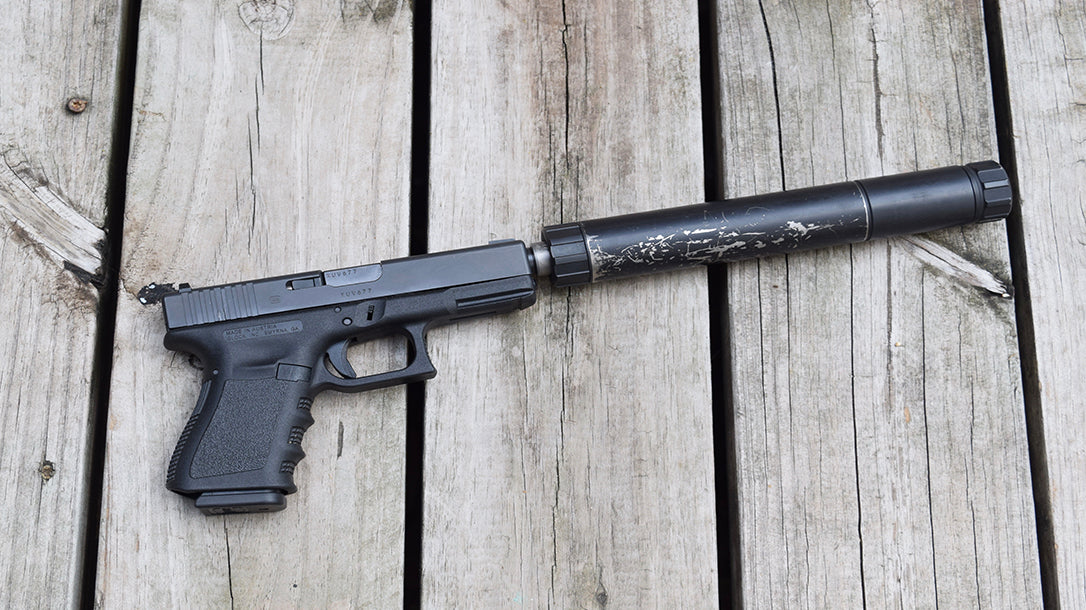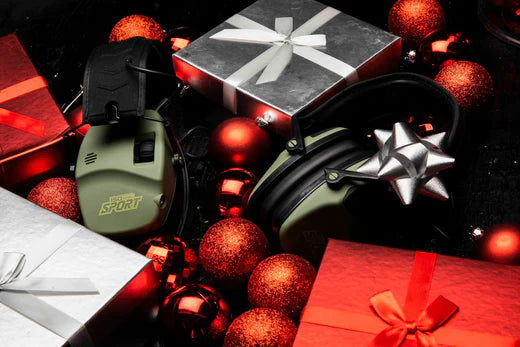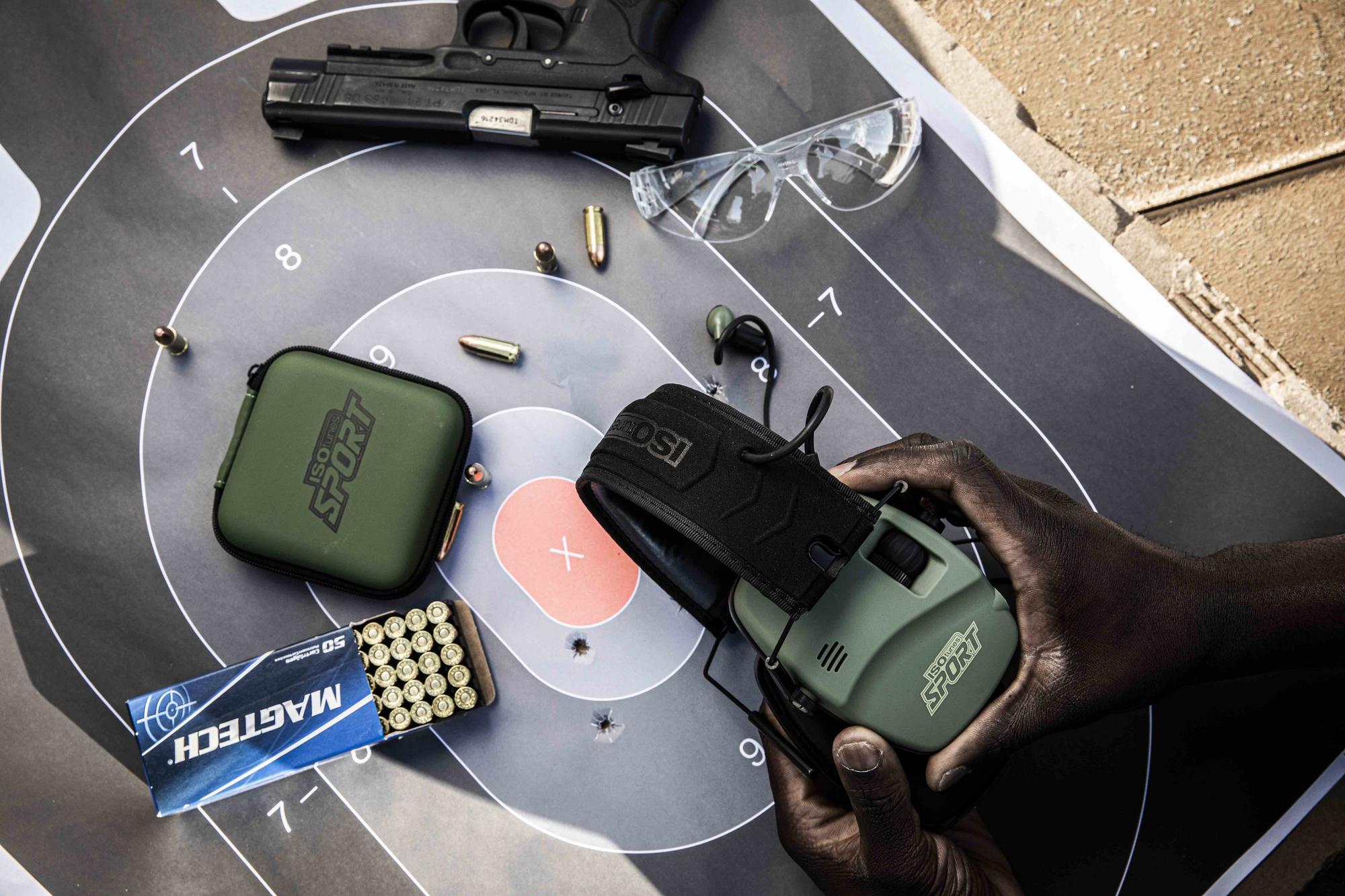diving into suppressors and silencers
If you’re reading this then you’re probably interested in the advantages of shooting with a suppressor. And with an expansive list of options from manufacturers and drastically shorter wait times from the Bureau of Alcohol, Tobacco, Firearms and Explosives (ATF), there has never been a better time to find the right suppressor and hit the range. In this article we will take a closer look at the development and inner workings of a suppressor, how much protection they offer, best pairings, and other benefits of shooting suppressed.
History and Development
The first firearm suppressor was invented in 1902 (patented in 1909) by Hiram Percy Maxim. Hiram was an American inventor, engineer, scientist, and hobbyist with developments in gas powered automobiles, Ham radios, aviation, sound suppression, and cinema. He graduated from MIT in 1886 as the youngest in his class. Interestingly enough, his father Hiram Stevens Maxim invented the first machine gun, the Maxim Machine Gun, and his uncle, Hudson Maxim, invented several explosives and propellants. The Maxim Silent Firearms Company was founded in 1908 by Hiram Percy Maxim and released the Maxim Silencer for firearms.
Silencer v Suppressor
Although this product was called a Silencer, today many refer to firearm silencers as suppressors because it’s a more accurate description of the device’s capabilities. Hiram Percy also invented the first automobile muffler using the same sound abatement concepts present in his firearm silencer.
Both the automobile muffler and firearm Silencer function using the same basic principals. High pressure gas creates a loud bang when introduced into a lower pressure environment quickly (like our atmosphere). It's the same principle as the loud bang that is created when a balloon is popped. By adding an expansion chamber with complex baffles to the end of a high pressure exhaust (automobile exhaust or firearm muzzle), the high pressure gasses can dissipate and cool slightly before being introduced into the atmosphere. This elongation of high pressure expansion lessens the pressure difference, and in turn, loud pop. Think of releasing the air out of a balloon through the valve instead of popping the balloon.

Baffles in a silencer allow gas to cool and dissipate before being exposed to a lower pressure atmosphere. Image Credit: Seven Days
Does a silencer reduce all noise?
Although these devices are very effective at reducing dangerous noises, neither of them actually silence this loud pop, contrary to what the name of the firearm product would suggest. The clever marketing behind naming the device a Silencer did lead many to believe that firearm suppressors were a dangerous product that could be used by criminals to fire weapons undetected. As a result, Silencers were included in the National Firearms Act of 1934.
The National firearms act (NFA)
The National Firearms Act (NFA) created a $200 tax and imposed strict processes on the creation, transfer, and possession of certain types of firearms and firearm accessories. This was done primarily to restrict, and in some cases prohibit, the spread of these items. At the time, customers were paying $200 for a $7 product. That’s like spending $4,000 today for a $150 product. Many concluded that it was too expensive, and nearly impossible, to own a silencer or anything else listed on the NFA.
The NFA tax is still in effect today, and the $200 fee has remained consistent despite increased suppressor costs and inflation. Consumers are willing to pay the tax, but are more concerned with the arduous approval process.
How long does it take to get a suppressor?
In addition to the tax, owners are required to submit photos, fingerprints, and paperwork (ATF Form 4) before taking possession of their purchased suppressor. This can take anywhere between 9-18 months, which often discourages and frustrates buyers. In an effort to improve this process, the ATF introduced an electronic version of ATF Form 4, which boasts a maximum wait time of 90 days.
Even still, many believe these additional taxes, processes, and delays undermine the benefits of reduced noise pollution and safer shooting experiences. This is why the Hearing Protection Act (H.R.95) was introduced to congress in 2015 (and again in 2021).
The Hearing Protection Act
This act aims to remove firearm suppressors from the NFA list which would make it easier for law-abiding citizens to obtain suppressors and reduce damaging noise.The Hearing Protection Act was referred to the Subcommittee on Crime, Terrorism, and Homeland Security and is not expected to pass both the House and Senate.
how does a suppressor work?
Gun shots are essentially two loud noises. The initial explosion from the expansion of hot gasses and the sonic boom of the projectile breaking the sound barrier. Silencers reduce the sound of the initial explosion through a chamber that allows expanding hot gasses to dissipate before exiting the firearm system. This feat is typically accomplished by utilizing a series of baffles within the silencer chamber that redirect and slow the gasses, elongating the time for them to expand and cool. This can help reduce overall noise levels when shooting with any type of ammunition.
However, a silencer does nothing to guard against the sonic boom/crack that a projectile creates when it travels faster than the speed of sound (about 1,100 fps depending on density altitude). This crack can only be defeated by firing ammunition that does not break the sound barrier. Subsonic ammunition exists for many calibers and will travel slower than the speed of sound, eliminating that sonic boom. When paired with a suppressor, the sound reduction is actually quite impressive. But not every caliber is ideal for a subsonic ammunition, nor is subsonic ammo required in order to use a suppressor.
The Physical Process of Hearing Damage
A gunshot produces impact noise, which is different from airborne noise. Impact noise is a physical assault on a solid object. In this case, the solid object is the bony structures of your ear. The impact noise from a gunshot is concussive and damaging, not only echoing around the inside of the ear, but also causing a physical impact within the ear.
Your ear is a series of parts — the eardrum, the tiny hair-like cells in your ear, plus the liquid sac called the cochlea. When you fire a gun without hearing protection , the impact noise can cause the tiny hair-like cells in your ear to shift positions, resulting in temporary hearing damage. If exposure is minimal, the cells should return to their normal shape within a few hours. In more severe cases with prolonged exposure, impact noises can lead to tinnitus, irreversible hearing loss, or even deafness.
Tinnitus — an ongoing ringing or noise in your ears that does not stop and may last indefinitely.
Tinnitus is an annoying condition. For some, the buzzing or ringing sounds in their ears never go away. It’s not only caused by having your ear near the chamber when firing a gun, but can be initiated just by being near a gun as it is fired.
How quiet is a silencer?
Now that we better understand how a suppressor works to lessen damaging sounds, let's take a closer look at how effective they actually are. It’s worth noting that prolonged exposure to sounds above 85dB can cause hearing damage, 130dB is considered the pain threshold, and at 140dB instantaneous permanent and irreversible hearing damage starts to occur.
Most firearms firing supersonic ammunition register between 150 and 175dB. Each silencer has its own unique characteristics, but most will reduce firearm noise by 20-35dB. The result is an overall dB rating of 120 for smaller calibers like 22lr, and somewhere between 135-150dB for centerfire pistols and rifles. If you switch to subsonic ammunition, like a 147grn 9mm or a 200grn 300Blk, you can expect an additional reduction of 10-25dB. Add to this a set of DEFY or ADVANCE and your experienced sound levels are down around 100dB. So if you’re wondering, "Do I still need hearing protection when firing with a suppressor?" the answer is yes!
best calibers for suppressors
Calibers that derive their utility from speed will be more difficult to find in subsonic, and for good reason. The 5.56 NATO and .223 Remington are obvious examples. These rounds fire lighter projectiles (commonly 55grn) very fast (2,500-3,000fps). By creating a subsonic round with a muzzle velocity of under 1,100fps you’re essentially shooting an expensive 22lr. That’s not to say that subsonic .223/5.56 ammunition isn’t out there, but it’s not highly sought after.
A remarkably similar caliber with prolific subsonic offerings is the aforementioned 22lr. 22lr subsonic ammunition is affordable, and paired with a suppressor, yields a training tool for shooters that is very quiet and can be used in pistols and rifles. Plus 22lr firearms and suppressors tend to be less expensive than their centerfire counterparts.
But what about shooters who want a centerfire rifle caliber that can perform well with a subsonic load? Enter the 300AAC Blackout. Compared to a .223, the 300AAC Blackout fires larger, heavier projectiles (180-220grn) at a slower rate (1050fps), all while carrying impressive terminal ballistics for hunting large game. And since it’s so similar to a .223, an AR-15 can be chambered in 300BLK and run subsonic or supersonic ammunition, suppressed or unsuppressed. This is another example of a fantastic caliber that pairs well with a suppressor. Just make sure that whatever suppressors you select are capable of accommodating the caliber you will be firing!
Most handgun calibers also suppress well. 9mm, .40s&w, and even 10mm AUTO all have heavier projectile offerings with subsonic muzzle velocities. .45ACP is almost impossible to find supersonic, since its muzzle velocity for most offerings is already 900fps.
other advantages
The most obvious advantage of using a suppressor is for that of sound mitigation and safety. Suppressors can create a better environment for new shooters learning firearms safety, and can provide a more enjoyable experience for others in the area. But that’s not all! There are many other advantages to shooting suppressed. When used with pistols, suppressors slow the recoil impulse and add non-reciprocating mass to the front of the pistol. These two qualities work to lessen the felt recoil of the firearm, and in turn, reduce any flich that a shooter might develop in response to a firearm discharging. With rifles, you can expect a point of impact shift since you are attaching a device that will change the barrel harmonics. This will not lessen the system's accuracy. Many users see an increase in the accuracy of their rifle with a measurable shrinking of group size. Suppressors also greatly reduce muzzle flash, creating an overall more positive shooting experience for seasoned shooters and newcomers alike.
in conclusion...
There are many advantages to shooting with a suppressor and I would encourage anyone reading this to do their own research and decide if a suppressor is right for them. But don’t forget that for less than the price of the tax stamp alone, anyone can purchase one of our ISOtunes Sport products without the hassle of paperwork and long wait times.
See you on the Range,
Topher Bell
Topher is a passionate firearms enthusiast. He is a match director for 3 Gun and also participates in pistol, precision rifle, shotgun, and rimfire competitions. He also enjoys rock climbing and spends most weekends on the range or at the crag.






